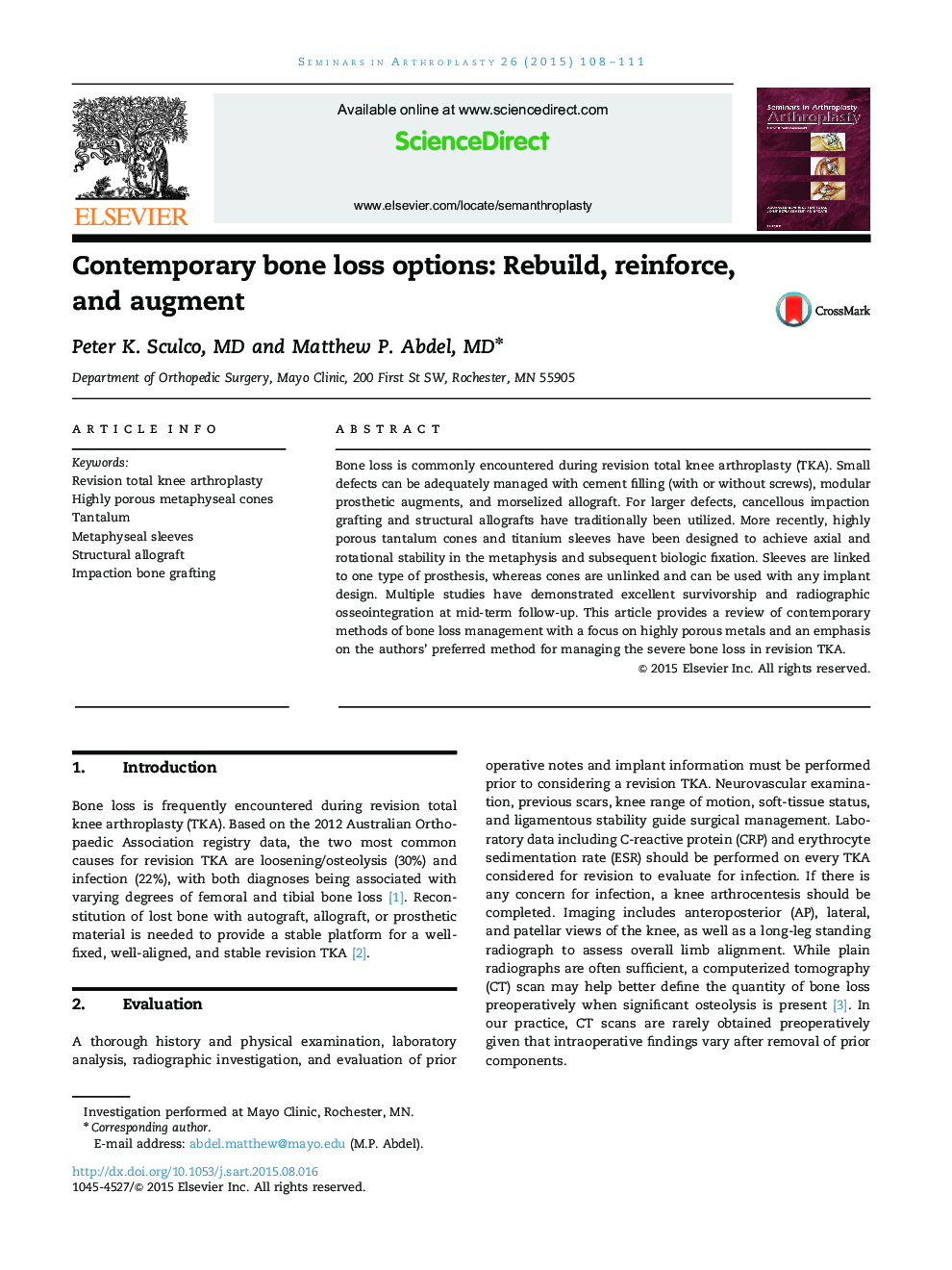| Article ID | Journal | Published Year | Pages | File Type |
|---|---|---|---|---|
| 4093835 | Seminars in Arthroplasty | 2015 | 4 Pages |
Bone loss is commonly encountered during revision total knee arthroplasty (TKA). Small defects can be adequately managed with cement filling (with or without screws), modular prosthetic augments, and morselized allograft. For larger defects, cancellous impaction grafting and structural allografts have traditionally been utilized. More recently, highly porous tantalum cones and titanium sleeves have been designed to achieve axial and rotational stability in the metaphysis and subsequent biologic fixation. Sleeves are linked to one type of prosthesis, whereas cones are unlinked and can be used with any implant design. Multiple studies have demonstrated excellent survivorship and radiographic osseointegration at mid-term follow-up. This article provides a review of contemporary methods of bone loss management with a focus on highly porous metals and an emphasis on the authors’ preferred method for managing the severe bone loss in revision TKA.
